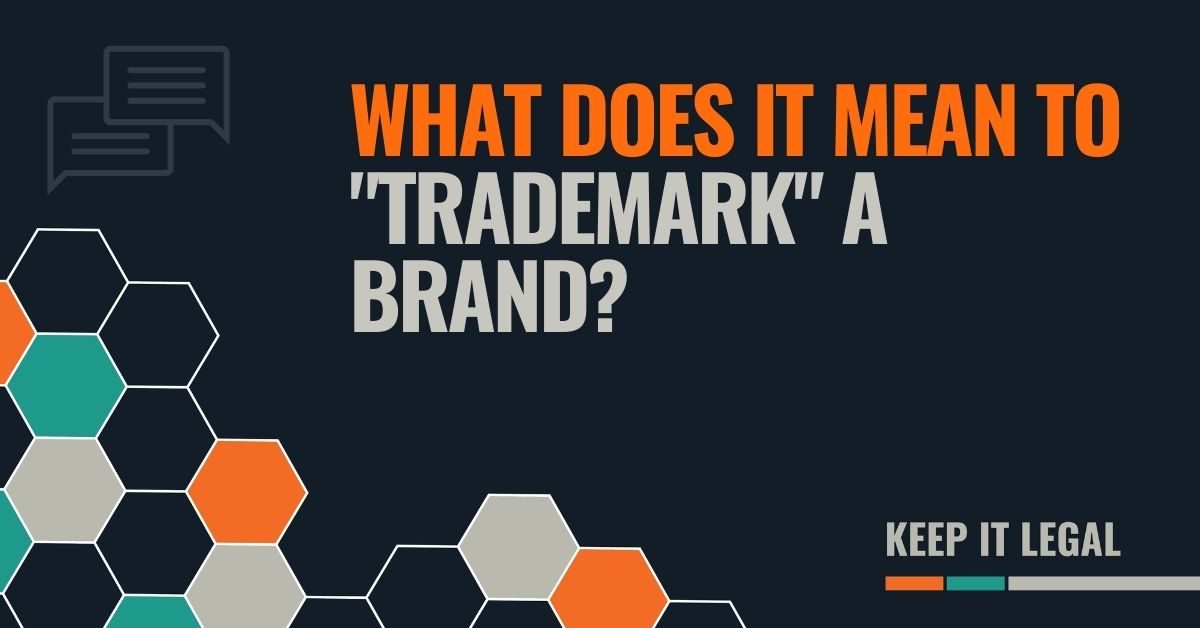What does it mean when someone asks me to “trademark” a brand for them?
First, of course, you need to know what a “trademark” is (for a review, check out my page What Is A Trademark?). Basically, it’s anything that identifies you or your company as the source of goods and services. Common trademarks include brand names, business names, logos, and taglines.
Typically, when someone reaches out to me to assist with trademark protection, what they’re thinking about is filing an application to register their mark as a trademark with the United States Patent and Trademark Office.
From my perspective (I’ve been practicing trademark law for 15+ years), filing a trademark application with the USPTO is very important, but it’s the second step in a process. The first step is making sure the trademark is actually available to use and protect. This is often referred to variously as “searching”, “due diligence”, or “clearance.”
Sometimes a client thinks their preferred mark is “available”, but that doesn’t turn out to be the case. The sooner the client learns about a conflict, the better. A transaction-based intellectual property attorney can assist with this process.
The #1 thing that most people don’t know about trademarks that gets them into trouble is that in the U.S., trademark rights are based on “use in commerce”. This means that if someone is using a similar or identical mark for related goods or services, they may have superior legal rights even if they have never applied to register their mark with the USPTO. So, in most cases, clients are advised to have an attorney perform due diligence to search for anyone out there who can claim rights in their proposed trademark. This hypothetical person is referred to as the “Senior User”.
It’s important to know that even if the USPTO grants you a registration for your mark, a Senior User could still come out of the woodwork and prevent you from using your mark. They can even, in some cases, compel the USPTO to terminate your trademark registration. Bottom line: having a USPTO trademark registration is helpful and important, but it doesn’t cure pre-existing problems, and what you don’t know can hurt you.
To be clear, clients have two issues to consider:
- Is this trademark likely to be approved for registration by the USPTO?
- Will I be able to use and protect this trademark and to defend it against any legal claims?
Only when both of those questions have been answered to the client’s satisfaction should the USPTO trademark application process begin.
This is why, even if the client has checked the availability of their proposed trademark in the USPTO’s database, it’s still usually wise to do a more comprehensive search to see if we can find any conflicts. We refer to this as a U.S. Full Availability Trademark Search. In essence, we order a search report that covers not just the USPTO’s database, but also state trademark filings, business names, newspapers, magazines, domain names, and a variety of other sources. Spelling variations are also included in the search. Once we obtain the report, we review it, draft a legal opinion letter covering the results, and discuss it with the client.
A trademark search is not a binary, “yes or no” matter. There are often gray areas. And each client has their own unique circumstances and levels of risk that they’re willing to tolerate. Of course, you don’t know what you’re going to find until you find it, and sometimes the search results send the client back to the drawing board. This is why it’s best to work with a transaction-based intellectual property attorney during this process. Again, the goal is to identify conflicts before they become a problem and to assist the client in establishing a brand and a trademark that they can use and protect over the long term.
Once we’ve gone through the search process, and the client is ready to proceed, then it’s time to prepare and file a USPTO trademark application. That’s what a trademark attorney thinks when someone asks them to “trademark” their brand.
Also, we don’t like using the word “trademark” as a verb, but that’s another story…


